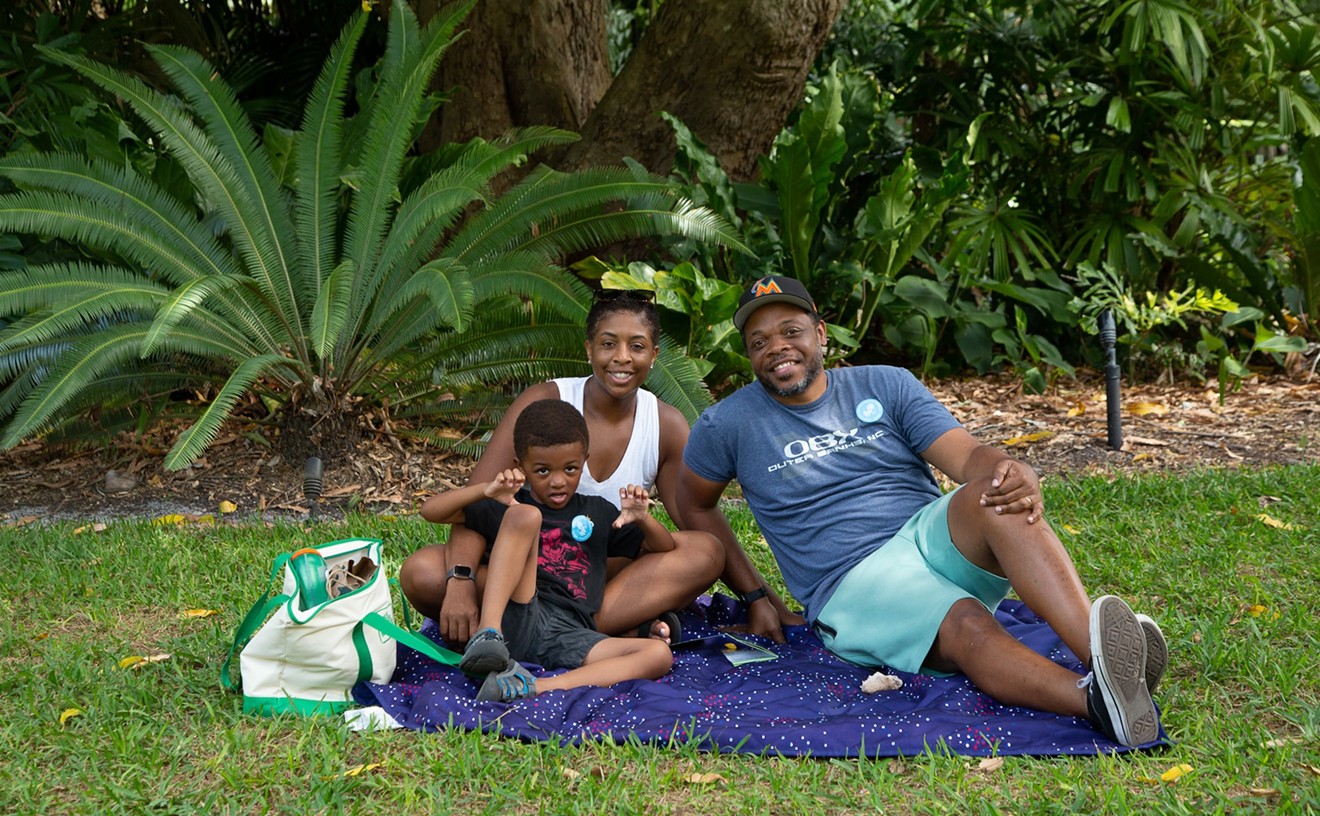It's a jungle out there in South Florida. No, really -- this is the tropics. From scorpions and parrots to alligators and iguanas, we share our state with a plethora of critters, some super cuddly, others deceptively deadly.
Miami author Michael Largo knows all about the beasties. He's been collecting data on animals for decades, and his new book, The Big, Bad Book of Beasts: The World's Most Curious Creatures delves into truth and lore about our furry friends.
We spoke to Largo on South Florida's baddest beasts and creepiest crawlies. So if you ever wondered whether cockroaches really are indestructible, why mosquitoes eat you alive, and how often alligators eat people, stay tuned after the jump.
See also:
- Stephenie Meyer Takes Miami: Ten Questions For the Twilight Author
10. There are giant Burmese pythons in the Everglades. But not as many as we thought.
"They had a hunch, they thought there were a lot of Burmese pythons. They had a hunt in the midst of these guys and they only caught 50," says Largo. "They think the number is only around 200, but with something that can grow to 26 feet long, it's a concern."
9. Alligators aren't into eating people.
Since 1948, there have only been 337 alligator attacks, and 13 fatalities. "You get more dog bites than alligator attacks," Largo says. And let's face it, there aren't even too many of those. People are way more deadly than any animal, anyway.
8. Our most dangerous local animal is ... wait for it ... the jellyfish.
"People die from the allergic reaction from jellyfish more than alligators," Largo says. So yeah, you should be more afraid of a spineless amoeba than a razor-toothed predator. Common sense be damned!
7. We've got lots of poisonous insects all around us, and there's no way to avoid them.
"We've got scorpions, black widows, brown widows, we also have fire ants, velvet ants, wheelbugs -- we also have like about 10 varieties of stinging caterpillars," Largo says. So even your friendly neighborhood caterpillar ain't necessarily so friendly. That's the price we pay for living in the tropics.
6. There's a species of jellyfish that's immortal.
"Jellyfish start as polyps; basically they start as a plant. They have a stem, their head that we see is actually reverting so their tentacles become like these branches of this plant that they anchor to the bottom floor. They develop into full grown jellyfish and disperse, but there's one species where its cells actually revert. They change back to the polyp stage so it returns to being a plant-like creature again and never dies." Can't we bottle that?
5. Mosquitoes can smell human sweat from more than 100 feet away. So if they like you more than your neighbor, maybe you're just sweatier.
"Their numbers are staggering. From a single pair, they can hatch within 5 to 15 days. From a single pair in June they can produce a million offspring by December." Basically, we're never getting rid of them. They've been around for more than 400 million years -- and they haven't changed. (And yes, giant mutant mosquitoes probably are coming our way this summer.)
4. Only the female mosquitoes bite. Kinda says it all, doesn't it?
And, "the female can only lay eggs after a meal of blood," Largo says. Ahhhh, women.
3. It's not just a saying -- cockroaches probably would survive a nuclear war.
"They can go to almost sub-freezing or up to 190 degrees and still not be affected. They can not eat for at least three or four months or they could survive off the glue of a postage stamp. Talk about adaptability," Largo says. While they couldn't survive a direct blast (nothing could), they would probably be the first to be able to return to the area. Humans, by comparison, are the weaklings of the world.
2. Ticks are nasty bastards.
"From 1900, tick borne diseases have killed 1,133,871 people. They can give Lyme disease, Master's disease, tick paralysis, Query fever ... they may take a bite out of a rat and then go to your dog or you and they bury their head in your skin. They have to spit some of this blood back in through capillary action, so that's where the diseases come from," Largo says. Gross. And they've been around for 500 million years, so they're probably not going anywhere either.
1. Wanna stay safe? Know your bugs and beasts.
Largo says knowing your enemy is key -- but don't underestimate them. "Being able to identify what it looks like, knowing its habits, where they live ... you can appreciate the almost prehistoric capability of a black widow. It's just an incredible chemical biological machine."
Picking up a copy of The Big, Bad Book of Beasts is probably a good first step. You can snag one at Books & Books, and Largo will be signing copies at the Coral Gables outpost at 6:30 p.m. on April 22.
Follow Cultist on Facebook and Twitter @CultistMiami.










